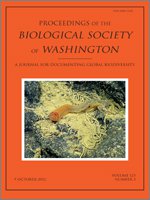Virilastacus jarai, a new species of burrowing crayfish, collected in the Intermediate Depression of the Biobío Region in central-southern Chile is described. This is the fourth species of Virilastacus, a genus endemic to Chile, to be described to date. Features that distinguish V. jarai from its congeneric species are: 1) rostral carina, short, slightly prominent and widely separated from the orbital margin; 2) pilous dorsal side of the opposable margin of the P1 propodus, as is the basal zone of the ventral side, 11 to 22 teeth on its opposable margin; 3) dorsal surface of the P1 dactylus close to the opposable border, hirsute; external distal border of the ischiopodite of the third maxilliped with a large extension that ends in the form of a right angle; 4) precervical cephalothorax with dorsal ridges absent, or with two or four; 5) areola, wide and extended; 6) telson with small, but sharp, lateral spines. Morphologically, this new species is similar to Virilastacus araucanius and V. retamali, with whom it shares 14 of the 27 morphological attributes analyzed, nine of which are common to these three species. These same attributes (13 of 14) differentiate V. jarai from V. rucapihuelensis, with whom it only shares seven morphological traits. The morphological similarity of V. jarai with V. araucanius and V. retamali contrasts with the degree of genetic divergence that exists between these species. Finally, the IUCN Red List Criteria are used to assign the conservation status of “Critically Endangered” to this new species.
Se describe Virilastacus jarai una nueva especie de camarón excavador recolectada en la Depresión Intermedia de la Región del Biobío en el centro-sur de Chile. Esta es la cuarta especie que se ha descrito de Virilastacus, género endémico de Chile. Esta nueva especie puede distinguirse de sus congéneres por tener: 1) carina rostral corta, poco prominente y muy separada del borde orbital; 2) costado dorsal del margen oponible del propodito de P1 piloso, al igual que la parte basal del costado ventral, y 11 a 22 dientes en su margen oponible; 3) superficie dorsal del dáctilo de P1 próxima al borde oponible, hirsuta; 4) borde distal externo del isquipodito del tercer maxilípedo con una gran proyección que termina en forma de ángulo recto; cefalotótrax precervical sin prominencias dorsales, o con dos o con cuatro; 5) areóla ancha y extendida; 6) y telson con espinas laterales pequeñas pero agudas. Morfológicamente, esta nueva especie se asemeja a Virilastacus araucanius y V. retamali, con las que comparte 14 de los 27 atributos morfológicos analizados, nueve de los cuales son comunes a estas tres especies. Estos mismos atributos (13 de 14) diferencian a V. jarai de V. rucapihuelensis, con quien comparte sólo siete rasgos morfológicos. La similitud morfológica de V. jarai con V. araucanius y V. retamali, contrasta con el grado de divergencia genética que existe con estas especies. Finalmente, se utilizan los criterios de la Lista Roja de la UICN para asignar el estado de conservación “En Peligro Critico” a esta nueva especie.





